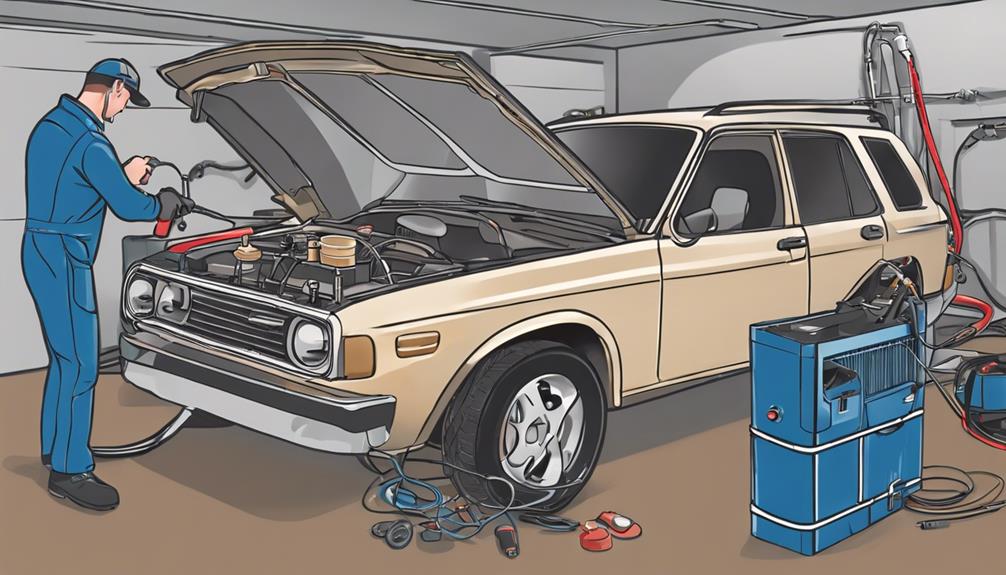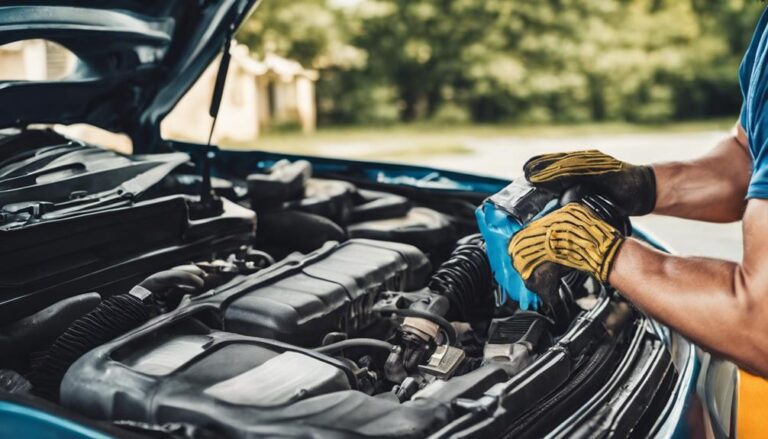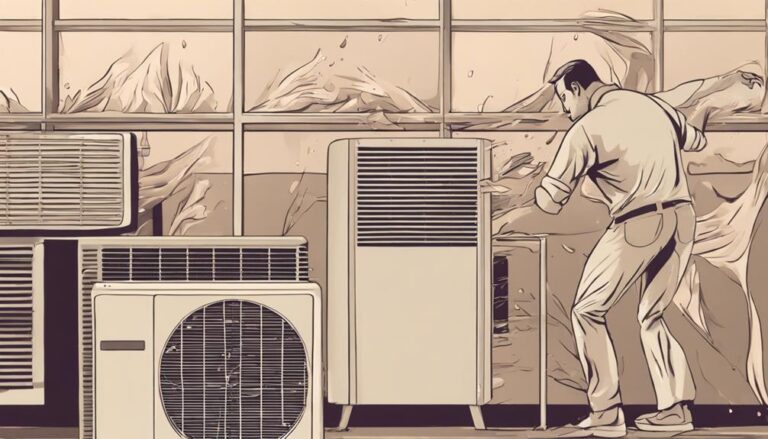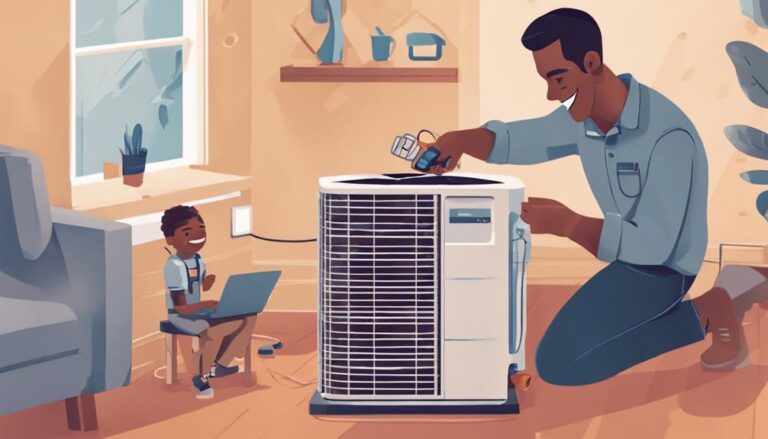What to Expect During Car AC Compressor Replacement?
If you've ever wondered about the intricacies of car AC compressor replacement, prepare for a journey through a methodical and essential process.
From the initial assessment to the final system testing, each step plays a vital role in restoring your vehicle's cooling capabilities.
But what exactly happens in between these stages? Let's uncover the key elements that make this procedure both challenging and rewarding.
Key Takeaways
- Skilled technicians ensure efficient replacement within 2-4 hours.
- Enhanced cooling efficiency and restored functionality post-replacement.
- Safety measures like using safety gear and following proper procedures.
- Regular maintenance crucial for system longevity and optimal performance.
Cost of Professional AC Compressor Replacement
When considering the cost of professional AC compressor replacement, you can expect it to range from $750 to $1500. This cost breakdown is influenced by several factors. Labor rates play a significant role in determining the final expense, as higher rates will naturally increase the overall cost of the replacement.
Additionally, the choice of compressor brand can impact the price range. Some brands are known for their durability and performance, commanding a higher price tag compared to others. Moreover, the need for additional parts during the replacement process can also contribute to the total cost.
Comparing brands is crucial to ensure you're getting the best value for your money. By understanding these elements that affect the cost, you can make an informed decision when selecting the replacement compressor for your vehicle.
Duration of AC Compressor Replacement
The average duration for completing an AC compressor replacement typically ranges from 2 to 4 hours. Efficiency plays a crucial role in how quickly the replacement can be done. The variability in time is influenced by factors such as the vehicle's make and model, accessibility of the compressor, and any additional components requiring replacement.
Professional technicians adept in AC system repairs can efficiently handle the replacement within this estimated time frame. Certain factors like system flushing, refrigerant evacuation, and testing procedures can impact the overall duration of the AC compressor replacement process.
Ensuring a timely and accurate replacement of the AC compressor is vital for maintaining the proper functionality and efficient cooling of the vehicle's interior. By considering these factors and entrusting the job to skilled professionals, you can expect a swift and effective AC compressor replacement process, allowing you to get back on the road with a comfortably cooled vehicle.
Safety Measures During Compressor Replacement

To ensure your safety during compressor replacement, remember to wear safety glasses and latex gloves to protect your eyes and hands throughout the process. Here are some safety precautions and troubleshooting tips to consider:
- Disconnect the battery cable: Before starting the replacement process, it's essential to disconnect the battery cable as a safety precaution to avoid any electrical mishaps.
- Inspect refrigerant lines: Check the refrigerant lines for wear or dirt to ensure proper functioning after compressor replacement. Addressing any issues beforehand can prevent future problems.
- Use a recovery machine: Evacuate the refrigerant using a recovery machine before replacing the AC compressor. This step is crucial to prevent any leaks or contamination.
- Remove the serpentine belt: Properly remove the serpentine belt from the compressor pulley before starting the replacement procedure. This will make the process smoother and prevent any damage to the belt.
Performance Expectations After Replacement
For optimal performance post-replacement, anticipate enhanced cooling efficiency and restored air conditioning functionality. A successful AC compressor replacement should result in improved efficiency and performance, addressing common issues like weak airflow, warm air, and intermittent cooling. You can expect quick cooling and a comfortable driving experience once the new compressor is in place. Reduced noise levels and consistent cold air output are typical outcomes, ensuring a pleasant environment within your vehicle. Quality replacement parts and professional installation play crucial roles in sustaining long-term AC system performance. Below is a table summarizing the performance expectations after an AC compressor replacement:
| Performance Expectations | After AC Compressor Replacement |
|---|---|
| Cooling Efficiency | Improved |
| Air Conditioning Functionality | Restored |
| Airflow | Strong |
| Noise Levels | Reduced |
| Cold Air Output | Consistent |
Maintenance Tips Post Compressor Replacement
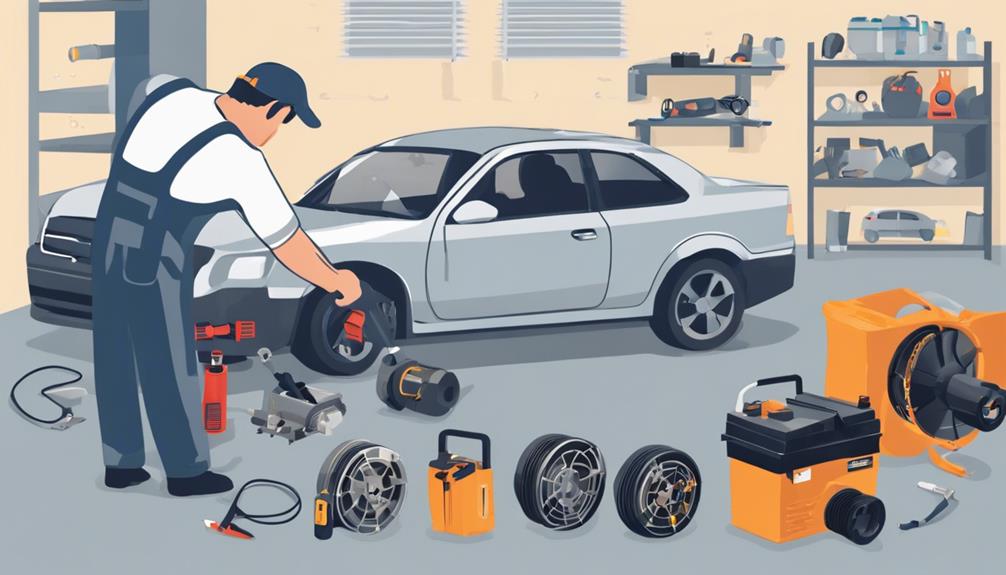
Consider using a high-quality compressor oil for optimal lubrication and longevity of the new AC compressor post-replacement. To ensure the efficiency and durability of your car's AC system, follow these maintenance tips:
- Use High-Quality Compressor Oil: Opt for a top-grade compressor oil to provide proper lubrication to the compressor components, enhancing its performance and longevity.
- Check Refrigerant Levels: Verify that the refrigerant levels are at the correct pressure after compressor replacement to maintain optimal cooling efficiency.
- Inspect for Leaks and Noises: Regularly check the AC system for any leaks or unusual noises, addressing them promptly to prevent any potential issues.
- Monitor Cooling Performance: Keep an eye on the AC system's cooling performance to ensure that the compressor replacement was successful and that the system is operating efficiently.
Frequently Asked Questions
When ReplACing a Car AC Compressor What Else Should Be ReplACed?
When you replace a car AC compressor, remember to also replace the receiver/dryer, orifice tube, and O-rings on refrigerant tubes for optimal performance. Lubricate new O-rings, then reinstall refrigerant lines and the serpentine belt. Remember a refrigerant refill.
How Long Does It Take to Change an AC Compressor in a Car?
When replacing an AC compressor in your car, the labor cost varies based on the model and accessibility, typically taking 2 to 4 hours. Warranty coverage for the compressor may depend on the manufacturer or the shop you choose.
What to Do After Installing a New AC Compressor?
After installing a new AC compressor, ensure all connections are secure and bolts are tight. Lubricate O-rings, reinstall lines and belt correctly. Perform system tests for operation. For maintenance, follow manufacturer specs. If issues, troubleshoot and check warranty coverage.
Is ReplACing Car AC Compressor Hard?
Replacing a car AC compressor can be challenging but manageable with DIY tips. Common issues include refrigerant handling and electrical connections. Seek professional help for smooth replacement. Follow instructions for effective functionality of the new compressor.
Conclusion
In conclusion, replacing your car's AC compressor is a meticulous process that ensures optimal cooling performance. By following safety measures and thorough steps, you can expect improved functionality and comfort in your vehicle.
Remember, like a well-oiled machine, your car's AC system relies on all components working together seamlessly. So, don't overlook the importance of proper maintenance to keep things running smoothly and cool as a cucumber.

